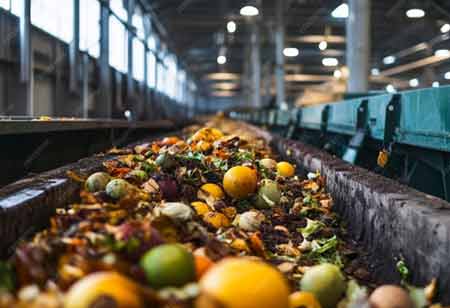THANK YOU FOR SUBSCRIBING
Be first to read the latest tech news, Industry Leader's Insights, and CIO interviews of medium and large enterprises exclusively from Food and Beverage Tech Review
Lets Pick a Bone With These New Technologies!
A physics-based computer algorithm superimposes the produced images to form a third image with greater details. The third image enhances the presence of non-food substances with enriched detailing.

By
Food and Beverages Tech Review | Tuesday, August 06, 2019
Stay ahead of the industry with exclusive feature stories on the top companies, expert insights and the latest news delivered straight to your inbox. Subscribe today.
Food inspection processes need to be upgraded, especially for meat and poultry. The precision of conventional techniques are lacking and have a high risk of compromising food safety.
FREMONT, CA: The inspection technologies available for meat, poultry, and other soft products at present can miss out on detection of bone, metal, and other foreign materials. They have also provided reports that show ambiguous results that require time-consuming and tedious verifications. The new approach will improve detection probabilities substantially and decrease the necessity of manual checking. Utilizing the microfocus, dual-energy radiographic imaging combined with advanced algorithms, detection, and identification of contaminants can be accurate.
The three components are seamlessly connected to improve the accuracy and resolution of contaminant detection. A microfocus x-ray tube detects smaller objects and provides enhanced measurements for dual-energy attenuation properties. Dual-energy radiography, with the usage of both high-energy and low-energy tube, gives an output of two radiographic images. The materials with various radiographic densities respond differently to LE and HE; this provides the basis for dual-energy radiography. A physics-based computer algorithm superimposes the produced images to form a third image with greater details. The third image enhances the presence of non-food substances with enriched detailing.
The combination of these approaches will result in the provision of detailed results ingenious to the same techniques. The microfocus method will enhance the dual-energy process and enable much accurate processing of radiographic density.
Maximizing the Probability of Detection:
The approach mentioned above to detect the contaminants in poultry and meat has been tested and demonstrates accurately the detection and identification of glass, bone, and plastic fragments as small as 1 mm in diameter.
By enhancing the probability of detection for contamination, significant benefits for the meat and poultry industry are recognized. The conventional inspection systems have a bone fragment detection capacity of 50-70 percent for the sizes of 3-4 mm by using either one out of microfocus or dual-energy techniques. But, when the methods are combined with the smart algorithm, the probability of detection for the same fragments of bone is 100 percent.
I agree We use cookies on this website to enhance your user experience. By clicking any link on this page you are giving your consent for us to set cookies. More info


However, if you would like to share the information in this article, you may use the link below:
https://www.fbtechreviewapac.com/news/lets-pick-a-bone-with-these-new-technologies-nwid-309.html





